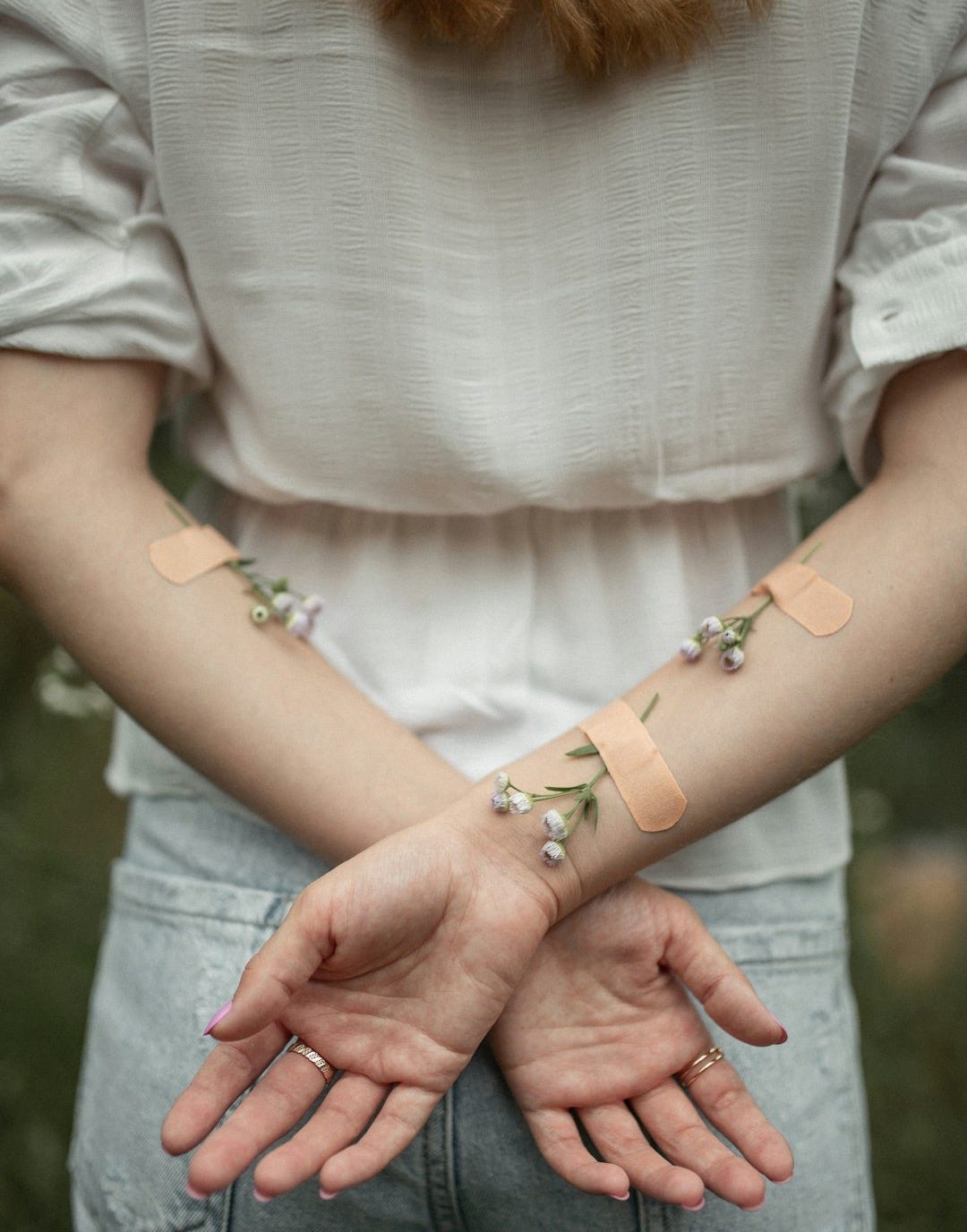When Pain Speaks What The Mind Keeps Secret
The ache in my arms wasn’t from lifting too much—it was from carrying what was never mine to hold.
Dearest Reader,
Welcome to Wildflowers Grow. I’m Alice Wild, inviting you on this wild journey with me: seeking truth beneath the surface. The place you’ve arrived is a soft landing for women just like you and I, who have walked through challenge and are learning how to live—and write—their way back to life. This is a place to remember who we are beneath what the world asked us to be.
You’ve clicked on my weekly paid post, and I want to gently invite you deeper: becoming a paid subscriber supports this message, amplifies the voices of women, and helps keep this space alive. It also unlocks a more intimate weekly post—like this one—and sustains my work as a trauma-informed, soul-driven author writing from the heart. I’d love to continue on this wild journey with you.
With so much love,
Alice Wild
P.S. Reading in the app? Substack makes upgrading a little tricky—just tap the link above, open it in your browser (not the app), log in, and you’ll be all set.
The pain was too much today.
It radiated through my arms—it felt like I had lifted weights far greater than my body could handle. While I attempted to make lunch, my arms shook with an ache that was hard to describe. I couldn’t pick up my six-year-old daughter this morning when it was time for her to hop up on the doctor’s bench at her appointment.
And I hid it.
Ibuprofen didn’t help. The doctors didn’t help. But one thing did.
Seth Kaufmann wrote in his Substack post “Fascia: The Body’s Bridge Between Trauma and Transformation” about memory in the tissue of our cells like a network—a web that runs throughout our entire body. Our body holds tension and memory until we release it—trauma lives in our cells.
“This stored tension creates patterns of discomfort, restriction, and imbalance that ripple through every dimension of life.” —Seth Kaufmann
I cried as I leaned against the counter in my kitchen. I knew what the pain was from. I knew what my body was trying to tell me. I knew what I had ignored.
The pain I felt in my left arm was a replica of the excruciating physical pain I had experienced in childhood. And I had been conditioned to dismiss it. Just like everyone else had when I was a child. Just like we were taught to.
But my story is not unique. Many women were gaslighted into confusion, self-doubt and above all else: silence. Many little girls were silenced like I had been.
Chronic and unexplainable pain speaks what the mind keeps secret.
To give the body a voice, I had to take a hard look at the lies imprisoning the truth. Once I did this, tears streaming down my face at my therapist’s office, the pain slowly faded. This is an exhale of what no longer belongs to us, and an inhale of peace, truth and a deep, embodied hope.
Let’s reclaim our stories, our voices and who we are as women and humans. Here are the five lies my therapist and I discussed in order to release the pain:
Lie #1 Healing is “mind over matter”
Some of us were taught—explicitly or implicitly—that if we just thought differently, we’d be accepted. That we could reason our way out of pain and mental health was a choice—one many people choose to live under in order to take advantage of others. Because they are weak. But trauma isn’t logical and those with mental health challenges are not weak—they are some of the strongest people you’ll meet. And ironically, this powerful lie is typically woven by those who inflicted the most pain.
Trauma lodges itself not just in the mind, but in the body—in our fascia, our breath, our nervous system. This is science. You can’t think your way out of a panic attack. You can’t reason away a flashback. True healing asks us to step beyond cognition and into the body, to listen to what it’s been trying to say for years. The emotional brain, the somatic self, needs tending. It needs presence, not pressure.
Lie #2 The pain is “in your head”
For years, I was told that what I was feeling must be stress-related, hormonal, or “all in my head.” I’ve had doctors—many of them men—assure me with calm, clinical tones that what I was experiencing wasn’t real, or at least not as real as I believed. But here’s the truth: women are significantly more likely to have their physical pain dismissed.
Studies have shown that women’s pain is more likely to be dismissed, misdiagnosed, or attributed to psychological causes.¹ What those doctors didn’t see was the history I carried—years of physical abuse that raised my pain threshold to a level few could comprehend. So when I finally did seek help, submitting myself to exams, prodding, and endless scrutiny—finally speaking when I was conditioned to keep quiet—it meant something was truly wrong.
Just because pain isn’t visible, or a doctor doesn’t have a clear explanation, doesn’t make it any less real. (Though it’s often easier for them to suggest we’re imagining it—spared from confronting their own limitations.) Our bodies remember. And we deserve to be heard, seen, and believed.
Lie #3 You aren’t worth healing
Keep reading with a 7-day free trial
Subscribe to Wildflowers Grow, a Healing Journey by Alice Wild to keep reading this post and get 7 days of free access to the full post archives.




